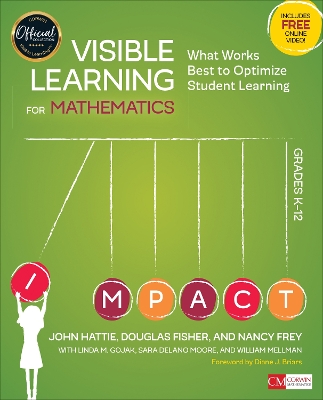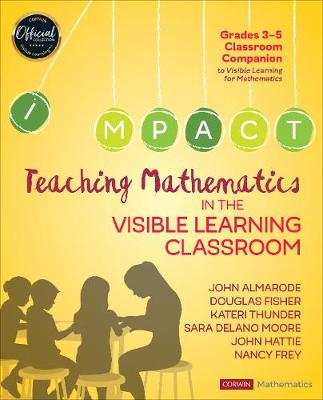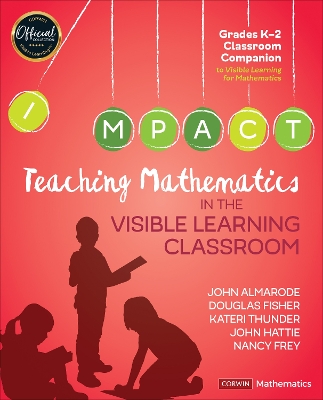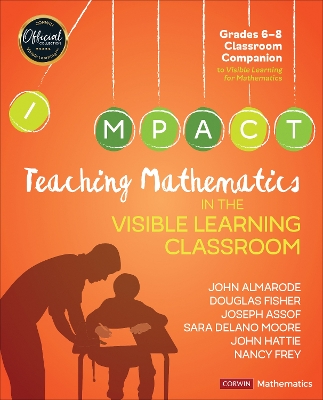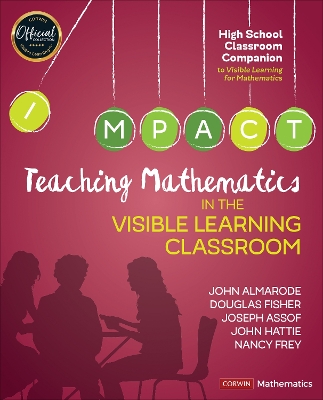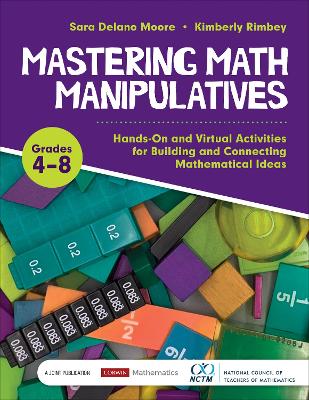Corwin Mathematics
10 total works
Mathematize It! [Grades 6-8]
by Kimberly Morrow-Leong, Sara Delano Moore, and Linda M. Gojak
Mathematize It! [Grades 3-5]
by Sara Delano Moore, Kimberly Morrow-Leong, and Linda M. Gojak
Solving problems is about more than computation. Students must understand the mathematics of a situation to know what computation will lead to an appropriate solution.
Mathematize It! shares a reasoning approach that helps students dig into...Read more
Solving problems is about more than computation. Students must understand the mathematics of a situation to know what computation will lead to an appropriate solution.
Mathematize It! shares a reasoning approach that helps students dig into the problem to uncover the underlying mathematics, deeply consider the problem's context, and employ strong operation sense to solve it.
This user-friendly resource for Grades 3-5
* Offers a systematic mathematizing process for solving word problems
* Provides specific examples for all four operations (addition, subtraction, multiplication, and division) with whole numbers, fractions, and decimals
* Demonstrates the use of concrete manipulatives to model problems with dozens of short videos
Mathematize It! [Grades K-2]
by Kimberly Morrow-Leong, Sara Delano Moore, and Linda M. Gojak
"This book is a must-have for anyone who has faced the challenge of teaching problem solving. The ideas to be learned are supported with a noticeably rich collection of classroom-ready problems, examples of student thinking, and videos. Problem solving is at the center of learning and doing mathematics. And...
Read more"This book is a must-have for anyone who has faced the challenge of teaching problem solving. The ideas to be learned are supported with a noticeably rich collection of classroom-ready problems, examples of student thinking, and videos. Problem solving is at the center of learning and doing mathematics. And so, Mathematize It! should be at the center of every teacher’s collection of instructional resources."
John SanGiovanni
Coordinator, Elementary Mathematics
Howard County Public School System, Ellicott City, MD
Help students reveal the math behind the words
"I don’t get what I’m supposed to do!" This is a common refrain from students when asked to solve word problems.
Solving problems is about more than computation. Students must understand the mathematics of a situation to know what computation will lead to an appropriate solution. Many students often pluck numbers from the problem and plug them into an equation using the first operation they can think of (or the last one they practiced). Students also tend to choose an operation by solely relying on key words that they believe will help them arrive at an answer, which without careful consideration of what the problem is actually asking of them.
Mathematize It! Going Beyond Key Words to Make Sense of Word Problems, Grades K-2 shares a reasoning approach that helps students dig into the problem to uncover the underlying mathematics, deeply consider the problem’s context, and employ strong operation sense to solve it. Through the process of mathematizing, the authors provide an explanation of a consistent method—and specific instructional strategies—to take the initial focus off specific numbers and computations and put it on the actions and relationships expressed in the problem.
Sure to enhance teachers’ own operation sense, this user-friendly resource for Grades K-2
· Offers a systematic mathematizing process for students to use when solving word problems
· Gives practice opportunities and dozens of problems to leverage in the classroom
· Provides specific examples of questions and explorations for addition and subtraction of whole numbers as well as early thinking for multiplication and division
· Demonstrates the use of concrete manipulatives to model problems with dozens of short videos
· Includes end-of-chapter activities and reflection questions
How can you help your students understand what is happening mathematically when solving word problems? Mathematize it!
Visible Learning for Mathematics, Grades K-12
by John Hattie, Douglas Fisher, Nancy Frey, Linda M. Gojak, Sara Delano Moore, and William Mellman
Teaching Mathematics in the Visible Learning Classroom, Grades 3-5
by John T. Almarode, Douglas Fisher, Kateri Thunder, Sara Delano Moore, John Hattie, and Nancy Frey
Teaching Mathematics in the Visible Learning Classroom, Grades K-2
by John T. Almarode, Douglas Fisher, Kateri Thunder, John Hattie, and Nancy Frey
Teaching Mathematics in the Visible Learning Classroom, Grades 6-8
by John T. Almarode, Douglas Fisher, Joseph Assof, Sara Delano Moore, John Hattie, and Nancy Frey
Teaching Mathematics in the Visible Learning Classroom, High School
by John T. Almarode, Douglas Fisher, Joseph Assof, John Hattie, and Nancy Frey
Mastering Math Manipulatives, Grades K-3
by Sara Delano Moore and Kimberly Ann Rimbey
It’s time to dive in and join in the journey toward making manipulatives meaningful so math learning is concrete, profound, and effective for your students!
Mastering Math Manipulatives, Grades 4-8
by Sara Delano Moore and Kimberly Ann Rimbey
It’s time to dive in and join in the journey toward making manipulatives meaningful so math learning is concrete, profound, and effective for your students!
![Cover of Mathematize It! [Grades 6-8]](https://images.bookhype.com/covers/67/d8/91574926-4a9f-4e54-af76-a60ae2118d76/9781506354484-77f2abd6dc1584f06b66cc.jpg)
![Cover of Mathematize It! [Grades 3-5]](https://images.bookhype.com/covers/f3/05/91574f17-e78b-416e-a240-f4cc3748503f/9781506395258-4d6631d0ce4c2504f46ab5.jpg)
![Cover of Mathematize It! [Grades K-2]](https://images.bookhype.com/covers/8e/82/91575082-2c34-4845-8a18-0aa9243a28e8/9781071811375-dcb53b191e8d398a5148f0.jpg)
